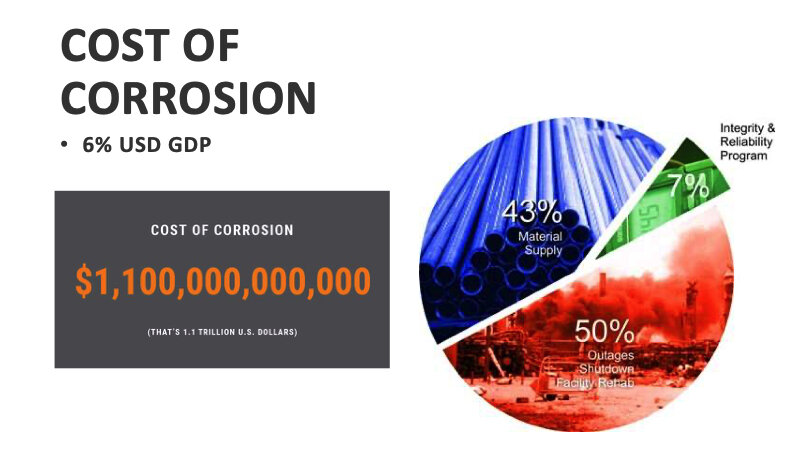Drones are “magical flying machines” straight out of science fiction. By adding robotic arms to drones we have created a specialized tool needed for the ongoing war on corrosion. For highways alone, corrosion costs the United States $400 billion a year with estimates that direct and indirect costs of corrosion are 6% of the US Gross Domestic Product. It’s time to put Aerial Robotic Systems to use fighting this war.
We live in a time when the fantastic has become ordinary. We have “magical flying machines” straight out of science fiction, cars that drive themselves, and an architecturally complex built world that has sprung up around us. Our telephones are pocket computers and almost anything we can imagine we can build, the pandemic notwithstanding. This very technology underlying these innovations is needed, and in use, for an ongoing war that’s right before our eyes… unseen but very real. This enemy fells bridges, sinks ships, sparks fires, and nearly brought down the Statue of Liberty. This war is against corrosion.
Apellix has created and is continuing to improve aerial robotic systems used in the war on corrosion that can prepare surfaces for coating/painting, apply the coatings, and monitor the coating job and the condition of the underlying asset. We’ve done that by combining industrial robots, such as those used for high endurance, speed, and precision manufacturing, to an industrial drone and creating the software to autonomously operate the system.
Our built world has more and more non-linear structures with flowing lines making maintenance, and corrosion prevention, difficult and challenging. One thing that is great about the Apellix Aerial Robotics is they can adapt. They can easily conform to non-linear surfaces and because the corrosion prevention and mitigation aerial robotic platform doesn’t travel on the surface it can clean, apply coating, perform tests, and complete selective maintenance seamlessly, over any form of surface.
“You may think I’m exaggerating by describing corrosion mitigation as a war but, direct and indirect costs of corrosion are 6% of the United States Gross Domestic Product. Think about that for a moment... The numbers are so large, they are not measured in millions or billions but as a percent of our GDP”
A lot of what is done in the industrial sector of the built environment is for managing corrosion. And this is a war. A war on corrosion. You may think I’m exaggerating by describing corrosion mitigation as a war... but, for highways alone, corrosion costs the United States $400 billion a year, according to the Federal Highway Administration. In the private sector, corrosion affects commercial aircraft, cargo and cruise ships, residential and commercial buildings, and more. Estimates are that direct and indirect costs of corrosion are 6% of the United States Gross Domestic Product. Think about that for a moment... The numbers are so large, they are not measured in millions or billions... but as a percent of our GDP.
In the public-sector corrosion impacts the military, our transportation, and infrastructure, just to name a few of the biggest categories. For the military, corrosion management – ships, aircraft, infrastructure, etc. – is their single biggest expense. It’s no secret our aging infrastructure needs repair. The National Traffic Safety Board says the most common cause of bridge accidents is rust. This is, with no exaggeration, a life-and-death battle.
Modern asset protection includes regular testing and monitoring of structural integrity and protective coatings.
Each step requires lifts, scaffold, cranes, or rope access
Providing access for work at height is typically 60% of total project cost
Apellix captures the entire maintenance process, performing the work, owning the data and facilitating the analysis/AI applications




